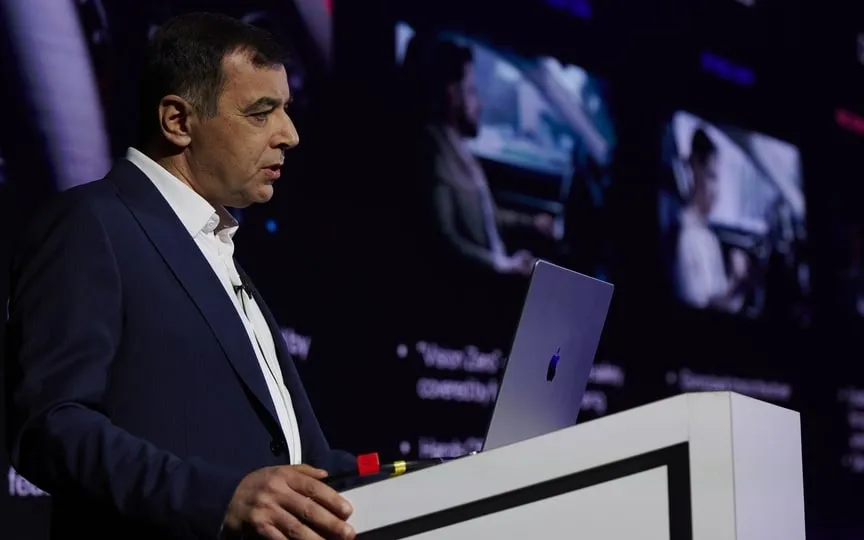Mobileye CEO Shashua anticipates increased presence of autonomous vehicles on the road within 2 years due to advancing technology.
Automakers and tech companies believed they were on the verge of introducing numerous self-driving robotaxis to transport passengers without human drivers six years ago.
Then Uber’s autonomous test vehicle hit and killed a pedestrian in Arizona, Tesla’s semi-automated systems experienced multiple problems, and General Motors’ Cruise robotaxis ran into trouble in San Francisco.
Still, technology is advancing, says Amnon Shashua, founder and CEO of Mobileye, an Israeli public company majority owned by Intel. Partially automated driver assistance systems and fully autonomous technology are pioneers.
Mobileye systems are already in use in vehicles that take over some driving functions, such as steering and braking, but a human still needs to be willing to take over. Systems that allow drivers to take their eyes off the road and fully autonomous systems are coming in about two years.
We are on WhatsApp channels. Click to join.
Shashua spoke with The Associated Press about the next steps toward autonomous vehicles. The interview has been edited for length and clarity.
Q: With Cruise’s problems and Tesla’s semi-automated driving system recalls, how do you see the future of autonomous vehicles?
A: When talking about autonomous vehicles, Waymo, Cruise and robotaxis immediately come to mind. But the story is much more nuanced. It really opens up what the future of the automotive industry looks like. It’s not just a robot. I would develop it into three stories. The first concerns security. Today you have a front facing camera, sometimes a forward facing radar. There are functions that make it possible to avoid accidents. You can take security to a much higher level if you have multiple cameras around the car and provide a much higher level of security. An accident would be extremely rare.
Another story is to add redundant sensors such as forward-facing lidar (laser) like imaging radars and implement an eyes-off (road) system to make it hands-free, eyes-off (road). You are legally allowed not to pay attention and be responsible for driving on certain roads. It could start with freeways and then add side roads. This is the value proposition of productivity, time buyback. If you drive from San Francisco to Los Angeles, 90% of the time you will be on interstate highways. You relax and legitimately do something else, like work on your smartphone.
Then comes this third story. This is a driverless robot, and we’re leveraging the car to a much higher level and enabling people like Uber and Lyft to get around in a much more efficient and economical space because you don’t have a driver.
Q: When will you see a lot of fully autonomous vehicles on the roads?
A: Mobileye’s SuperVision, which is now in about 200,000 vehicles in China and will begin expanding to Europe and the US this year, has 11 cameras around the car and offers a hands-free but eyes-aware system. Another story about the eyes off system on highways is already in the works. Mobileye announced that we have a global Western OEM (Original Equipment Manufacturer). We call the system the driver. Add forward-facing lidar and imaging radars, and nine car models to be released in 2026.
The third story: if you look at Waymo’s success, its challenge is not technological. It’s more about how to scale and build a business. The introduction of such robot taxis is slower than initially expected five years ago. But it’s something that really, really happens. Mobileye is working with Volkswagen on the badge. Buzz (the van car) will start rolling out thousands of such vehicles in 2026.
Q: Is Mobileye legally responsible for the eyes off system or is the car manufacturer?
A: If a driver is working on a smartphone and there’s an accident, you can’t come to the driver and say, “You’re responsible because I let you do something else.” So that means that the system performance bar, we call this mean time between failures, should be very high, much higher than human statistics. It is a liability system that is negotiated between the supplier and the car manufacturer.
Q: How do you feel about Tesla’s Autopilot and “Full Self-Driving” now, and what impact will these systems have on the public perception of automated driving?
A: Tesla’s technical potential is very high. The question of whether such a system, which works only with cameras, can be in the blink of an eye. This is where our paths diverge. We believe we need additional sensors for redundancy. It’s not just about improving the algorithms, it’s about adding more computation. You need to create redundancy from both a sensor and a compute perspective.
Also read these top stories today:
Facebook mess? Facebook can’t copy or acquire its way to another two decades of prosperity. Can CEO Mark Zuckerberg do it? Facebook is like an abandoned amusement park of poorly implemented ideas, says the analyst. Interesting? Check it out here.
Elon Musk’s purchase of Twitter is still in court! The court wants Elon Musk to testify to the US SEC about possible violations of the law in connection with the purchase of Twitter. Know where things stand here.
Does Tesla lack AI Play? Analysts emphasize this aspect, and for Tesla it is a problem. This article has some interesting details. Check it out.




